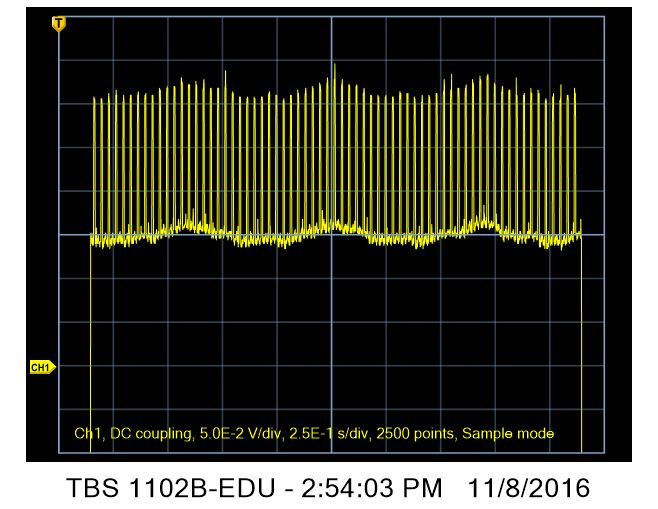This is a continuation in a series of posts on power consumption in the Sony a7RII. The more recent incarnation of the series starts here.
I reported on the battery draining effects associated with turning on IBIS in the Sony a7RII earlier, and found little effect. In a comment (the point of which eluded me at first), a reader surmised that the a7RII consumed more power because IBIS was available, even if it wasn’t turned on. His reasoning, which has turned out to be right on the money, was that, with IBIS off, the camera would still have to work to keep the sensor centered, since there doesn’t appear to be a mechanical locking mechanism.
Yesterday, I noticed that, with IBIS off, the camera current draw seemed to be a function of how much the camera was moving, even with IBIS off. I put this down as possibly the current draw changing with the brightness of what’s displayed, although I had measured for that before and found it to be relatively minor.
Today, I was testing for how much additional current having WiFi turned on causes (answer: the difference is not measureable without doing some long-term current averaging) and for what the effect on battery life of having pre-focus enabled (answer: not much), when I noticed that the current seemed to change with camera position even when the camera was just displaying the menus.
I waved the camera around and took a picture (IBIS off, LCD enabled):
The time base is set ot 250 msec per division. You can clearly see the current variation, which affects the peaks and valleys identically (it is additive).
The above was with the Sony 7-200/4 OSS. Is the current going to keep the lens elements focused on the set distane. One sure way to find out is to pop off the lens, put a body cap on the camera, and wave it around. This is with the camera displaying what the sensor is seeing (black) on the LCD:
My hat’s off to you, Philip. You nailed it.


Thank you for the update. I really like your objective way of testing. It is something I find boring doing myself but I love reading the results–selfish, haha :).
At times I sound like a bit of a “fanboy” because I am complimentary of Sony. I like to think I am honest, and there are certainly things that really irritate me of course. I cannot magnify focus and see the entire frame at the same time–a split view would be nice for manual focus lenses.
It seems Sony have an advantage compared to the competition regarding current draw, and I also think this is an important subject. A subject that’s often overlooked and oversimplified. Many think of “battery life” as how many shots they can take per battery. If an advertisement states a camera can take 1,200 shots, it’s less than impressive if that’s with a 10,000 mAh battery.
The efficiency of the Sony a7rII is one of the reasons I bought the camera. I relied upon the information provided in the instruction manual to make comparisons with a 5dmk3 I owned. I bought it on release, so I couldn’t rent or whatnot. My rough estimate was that Sony cameras are twice as efficient as a comparable DSLR in live view mode, which I use a lot for landscape photographs.
I’ll be hiking off the grid for a long distance next year and what is important to me is how many shots I can take with the available electricity I have–a solar panel and also a USB battery bank–not necessarily how many shots can be taken with one battery. In this regard, despite the fact the Sony battery is only 1,020 mAh, I have not been disappointed.
It wouldn’t surprise me if Sony remains the only manufacturer to offer a USB-powered camera for quite some time. Speaking of which, if it is not a nuisance, would you be able to test the current draw of the in camera battery while the camera is powered from an external USB source? I am curious but it is not hugely important :).
Samsung NX1 was the first camera to offer power USB, among many other marvels that other camera systems only dreamed about. September 2014, remember that date.